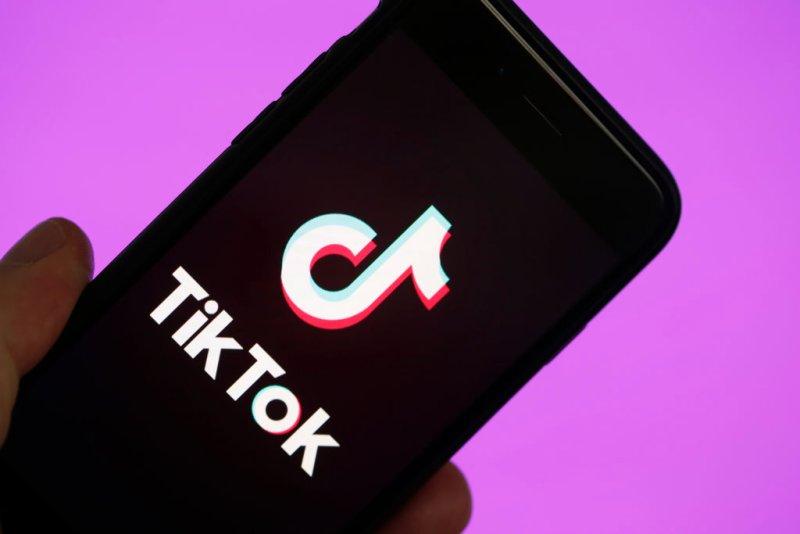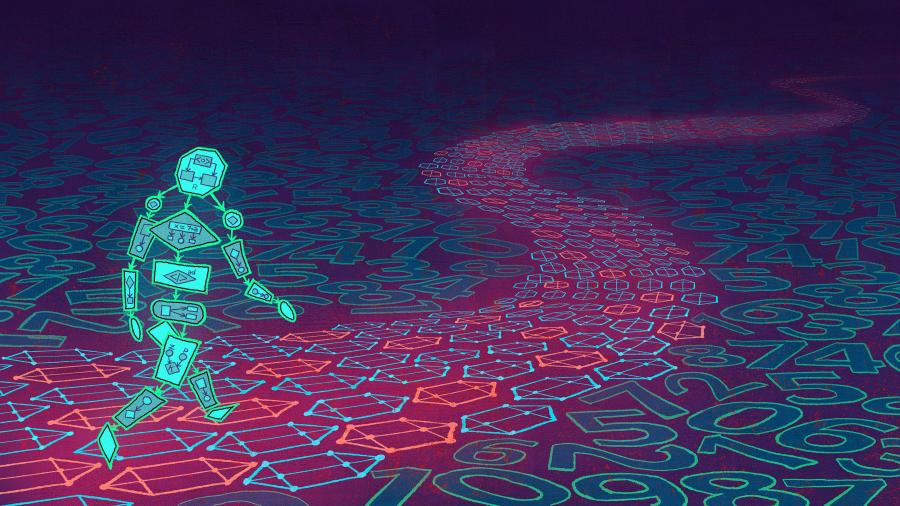
How does TikTok’s algorithm work?
Digitalization has evolved rapidly in recent years, creating all kinds of online spaces where humans can interact with each other in real-time. van Dijck (2013) terms such online spaces "mediators" because they influence our behavior and vision through their personalized settings and algorithms.
In this article, I will to analyze how TikTok's algorithms affect us and its potential side effects. Mediators have a substantial impact on our lives and our society. Sometimes they can be unintentionally harmful to users because of how social platforms keep us engaged with their content. They also help create specific standards for individuals to follow. Hence, we can say that technology forms sociality as much as sociality forms technology, and we can somewhat discover this through user responses (van Dijck 2013). This article will examine TikTok as a potentially harmful app that helps set false standards of beauty and creates challenges for the younger generation.
What is TikTok?

n this photo illustration, the social media application logo, Tik Tok is displayed on the screen of an iPhone in Paris, France
TikTok is a video-sharing social media platform that originated in China. Before the name TikTok the app was called Douyin and was owned by ByteDance. Douyin was primarily known in China and other Asian countries, but there was a more international version called Musical.ly. The platform offers a variety of short videos, including dance, singing, comedy, and educational videos. The videos’ duration varies between a couple of seconds and 3 minutes. After the immense success of these media, ByteDance bought Musical.ly and merged it with Douyin to create TikTok as we know it today. TikTok produces an even greater variety of short-video genres such as cooking, daily hacks, beauty tips, dances, and cosplays. Today many trends are set on TikTok. Of course, some people do not have a favorable opinion of these trends. Either way, we cannot deny the powerhouse that TikTok has become and the way it is shaping our society.
What is an algorithm?

Algorithms are computational programs used to make decisions based on specified calculations (Tufekci 2015). They follow a set of instructions that are not directly visible to the human eye. On social media, algorithms take note of our interests and personalize our news feed. They sort the things we may like and share, our posts, and content that is trending. These algorithms can create echo chambers - a constant loop that can be hard to get away from unless we are exposed to a different type of content. It can also affect our mood with the content we see or influence our point of view. Overall, algorithms operate on the basis of calculations, data processing, and automated reasoning. Whether we are aware of them or not, they still exist and are part of our lives.
How does TikTok's algorithm work?
TikTok on App Store, screenshot with Iphone 8
According to TikTok's web page, they use the For You Page to produce a more personalized experience. They give us content that we are interested in. It can be from our favorite influencers or completely random people that we may find interesting. The For You Page is entirely personalized and unique to each individual. As TikTok says, “recommendation systems surround us.” They explain that we cannot run away from the system, but it still needs to be explained to people. Hence, users will be more aware and educated about this phenomenon.
The platform further explains that several factors contribute to the For You Page system: the first is user interaction, or what a person likes, shares, follows, comments on, and posts. Second is video information, or specific sounds, hastags, and captions, and finally device and account settings, such as the users's location and language preference.
All of this information is gathered and processed by the algorithm in order to present what is considered the most valuable content to individual users. For example, the algorithm considers the time a person spends watching a video and whether they watch it until the end or not. This is taken as a demonstration of interest, and the algorithm continues to offer. On many other platforms, the algorithm suggests content from popular creators or the most viewed content. However, with TikTok, that is not the case - anyone can become famous.
Users can also refine personal interests through choosing to follow certain creators and exploring different categories, sounds, and other options. There is also an option to hide things you are not interested in, hide certain creators, or report inappropriate content. These features help us create our personalized feed.
However, sometimes those actions can limit us. Repetitive routines prevent us from seeing other opinions or experiences, creating an echo chamber effect. TikTok is currently working on this problem by exposing users to a variety of content, not just algorithmically similar videos to those users like. TikTok tries to offer users diversity in their feeds so they can enjoy new categories, new creators, and get to know different perspectives. This also allows the system to gather data about user preferences and what is popular among users overall.
TikTok's beauty algorithm

Some influencers, such as Salem Tovar, a YouTube content creator, argue that TikTok uses a beauty algorithm, i.e., the more beautiful someone is, the better chances he or she has on the app. This means that having a symmetric face and other defining features might guarantee success on TikTok. This may exlain why TikTokers like Charli D'Amilio suddenly blew up in the media and became an instant hit with a dance that was invented by a person of color.
The original discovery of the beauty algorithm was made by TikToker Benthamite. His claims are supported by a study from Liang et al. (2018) that introduced the public to facial beauty prediction or FBP. Liang and colleagues collected data from a set of 5500 frontal face images with various assets and labels to determine more information about their 'beauty score'. Just by exploring different features of people's faces, programs can determine their beauty in a specific country or culture. According to Liang et al. (2018), the credibility of a dataset is determined by using varieties of combinations of traits, and predictor, a tool used to discover what is popular in a specific culture or region, combined with other deep learning methods.
Platforms can use this computational process in their algorithms to determine whether a person would be considered beautiful in a particular country. Beautiful people, as determined by the app, thus have more chances to become famous and get more views. By using both the variety and beauty algorithms we get to see more people with the same features. Hence, we are presented with a lack of diversity because the same traits consistently appear, and we only see people who have similar facial structures. This makes the platform less diverse.
One example of this is Bella Poarch, who got very popular just by bobbing her head to the beat. Many commentators on YouTube and TikTok do not particularly like her - they wonder how she became so popular. However in many countries small noses, big eyes, small face shapes, and plump lips are considered beautiful. Bella Poarch seems to fit society's and TikTok’s beauty standards perfectly. Even if we do not agree with these beauty standards, the numbers of views on her videos do not lie. Moreover, those standards also potentially contribute to why so many unhealthy beauty trends occur on TikTok.
Consequences

Salem Tovar makes videos about not only TikTok's algorithms but also about our societal obsession with beauty standards. These socially constructed standards can lead to comparison amongst social media users and rating their own beauty and body image. It can cause severe damage to one's self-esteem and can also lead to depression.
A recent TikTok trend consisted of synching one's waist to show a slim and definedlook. A similar trend is to switch between a 'normal' and mirrored camera effect on a person’s phone. If the person looks symmetrical in both normal and mirror mode, then they are considered beautiful. Other trends encourage users to show off their small noses of determine if they have 'good' eyebrows by using a filter. The comments under those videos suggest that such standards can ruin our opinion about ourselves and can create a toxic environment.
We are responsible for our own societal norms. It is us, the people, who have to change our ways and beliefs. Like Tovar says, “I just want to see more diversity, I want to see people with actual talents.” We should be aware of the harms that algorithms can cause us and be more educated when we collide with such issues. We cannot see them but they are there. As Tufekci (2015) argues, “algorithmic manipulation is neither public, nor visible nor easily discernable,” which is why individuals can be easily influenced.
Conclusion
The aim of this article is to show the possible effects of TikTok's algorithm and to unveil how it works. Looking at the wider picture, we can see ongoing issues that need to be worked on so we can come up with a proper solution. This article's purpose is also to educate the reader on what to expect when scrolling the app, how to use it in an efficient way, and how to be aware of its potential risks. Furthermore, it is for the reader and the user to decide whether they will keep using the app.
It is up to each individual to draw their own conclusions. Social media may not form public discourse by themselves, but they do still shape public discourse (Gillespie, 2018). We need to keep asking questions and resist platforms' influence. Is TikTok’s algorithm dangerous? It is not that simple. Each platform influences us in a particular way, but staying informed can help us handle it.
References
Gillespie, T. (2018). Custodians of the Internet: Platforms, content moderation, and the hidden decisions that shape social media. Yale University Press.
Liang, L., Lin, L., Jin, L., Xie, D., & Li, M. (2018, August). SCUT-FBP5500: a diverse benchmark dataset for multi-paradigm facial beauty prediction. In 2018 24th International Conference on Pattern Recognition (ICPR) (pp. 1598-1603). IEEE.
Tufekci, Z. (2015). Algorithmic harms beyond Facebook and Google: Emergent challenges of computational agency. Colo. Tech. LJ, 13, 203.
Van Dijck, J. (2013). The culture of connectivity: A critical history of social media. Oxford University Press.